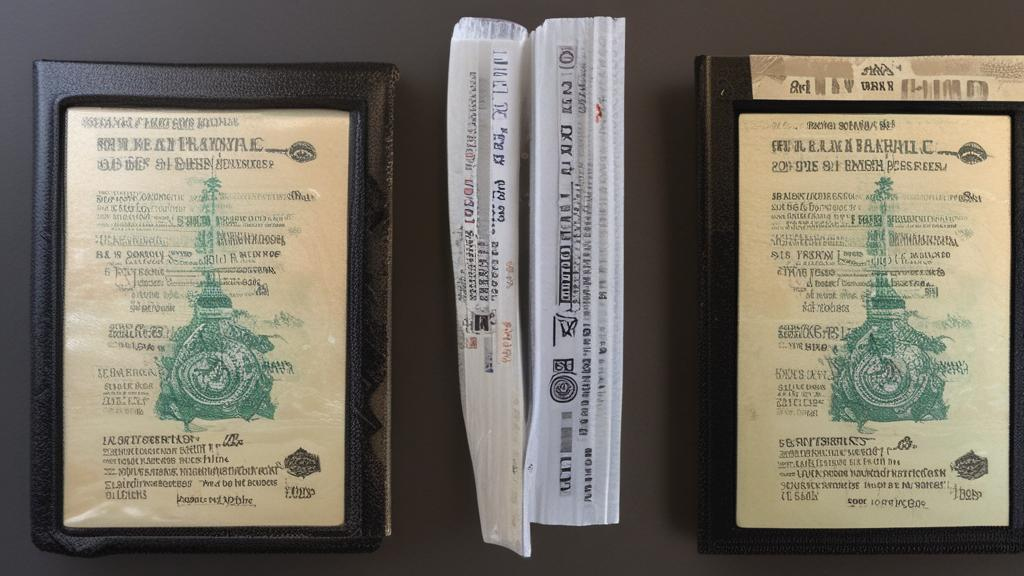Introduction
Imagine you’re planning your dream vacation abroad, eagerly packing your bags and checking off your travel checklist. Passport? Check. Tickets? Check. But what if disaster strikes and your passport encounters water damage? Suddenly, your travel plans are thrown into disarray. In this comprehensive guide, we delve into the world of water damaged passports, exploring their implications, what to do if it happens to you, and essential tips for prevention and recovery.
Understanding Passport Validity
Many travelers believe that passports become invalid only upon expiration. However, the reality is more nuanced. Passport validity hinges on various factors beyond the expiration date. A passport lacking blank pages, for instance, is deemed invalid for international travel. But where does a water-damaged passport fit into this equation? Let’s unravel this mystery.
The Vulnerability of Passports to Water Damage
Contrary to popular belief, passports are not waterproof. Crafted from paper pages, they readily absorb water upon contact, leading to soggy, illegible pages and faded text. So, if you’ve ever contemplated tossing your passport into the washing machine for a quick cleanse, think again.
Also Read: Repairing Water Damaged Subfloors: A Comprehensive Guide
Validity of Water-Damaged Passports
The burning question arises: can you still use a water-damaged passport for travel? According to immigration regulations, a passport must be in good condition, with sufficient blank pages and not expired, to be considered valid. While wear and tear are tolerated, visible water damage is not. Consequently, a water-damaged passport is rendered invalid for travel or official purposes.
Replacement Procedure for Water-Damaged Passports
Faced with a water-damaged passport, the only recourse is replacement. The process entails gathering essential documents, including the damaged passport, a signed statement detailing the water damage, form DS-11, proof of U.S. citizenship, proof of identification, and two passport photos. Minors must apply accompanied by parents or submit a notarized letter of consent. Replacement mirrors the procedure for obtaining a new passport, requiring in-person submission at a local acceptance agent.
Dealing with the Stress of a Water Damaged Passport
Experiencing water damage to your passport induces a wave of stress and anxiety. Passports serve as indispensable travel documents, and any form of damage jeopardizes their utility for international travel. Water damage, in particular, compromises the legibility of personal information crucial for identification. Hence, it is imperative to assess the extent of damage promptly to determine whether replacement is necessary.
Key Considerations for Replacing a Water Damaged Passport
Swift action is imperative when addressing a water-damaged passport. Failure to act promptly can impede immediate travel plans and precipitate complications with future visa applications. Assessing the damage accurately, understanding the replacement procedure, and considering upcoming travel plans are critical steps in navigating the process smoothly.
Determining the Validity of a Water-Damaged Passport
If your passport sustains water damage, evaluating its validity becomes paramount. Minor exposure may not necessarily render the passport invalid. However, significant indicators of damage, such as illegible personal information or peeling pages, necessitate replacement. Proper assessment is key to determining the passport’s usability post-water exposure.
Steps to Dry a Wet Passport
In the event of water exposure, swift action is crucial. Here are steps to mitigate water damage to your passport:
- Remove excess water by gently dabbing with a soft towel.
- Air dry the passport in a well-ventilated area away from direct sunlight.
- Place absorbent paper between wet pages to soak up moisture.
- Press the passport between heavy books to restore its shape and reduce wrinkling. Seek professional assistance if unsure about handling or if damage is extensive, as improper treatment can invalidate the passport.

Traveling with a Damaged Passport
Traveling internationally with a damaged passport entails risks and potential disruptions. Airlines and immigration authorities may refuse boarding or entry/re-entry if critical information is obscured due to water damage. Assess the extent of damage promptly and take necessary steps to address it before embarking on international travel.
Also Read: Exploring the Dilemma of Water Damaged Ceilings: Causes, Detection, and Repair
Conclusion
A water damaged passport is more than just an inconvenience; it can significantly disrupt travel plans and pose challenges for future endeavors. By understanding the implications of water damage, promptly assessing its severity, and taking appropriate action, travelers can navigate this ordeal with minimal disruption. Remember, prevention is key, but swift and decisive action is essential in the event of water damage to your passport.
By following these guidelines, travelers can safeguard their passport’s integrity and ensure smooth sailing on their international adventures. So, whether you’re exploring distant lands or embarking on a business trip, keep your passport dry and pristine to avoid the headache of dealing with a water damaged passport.










